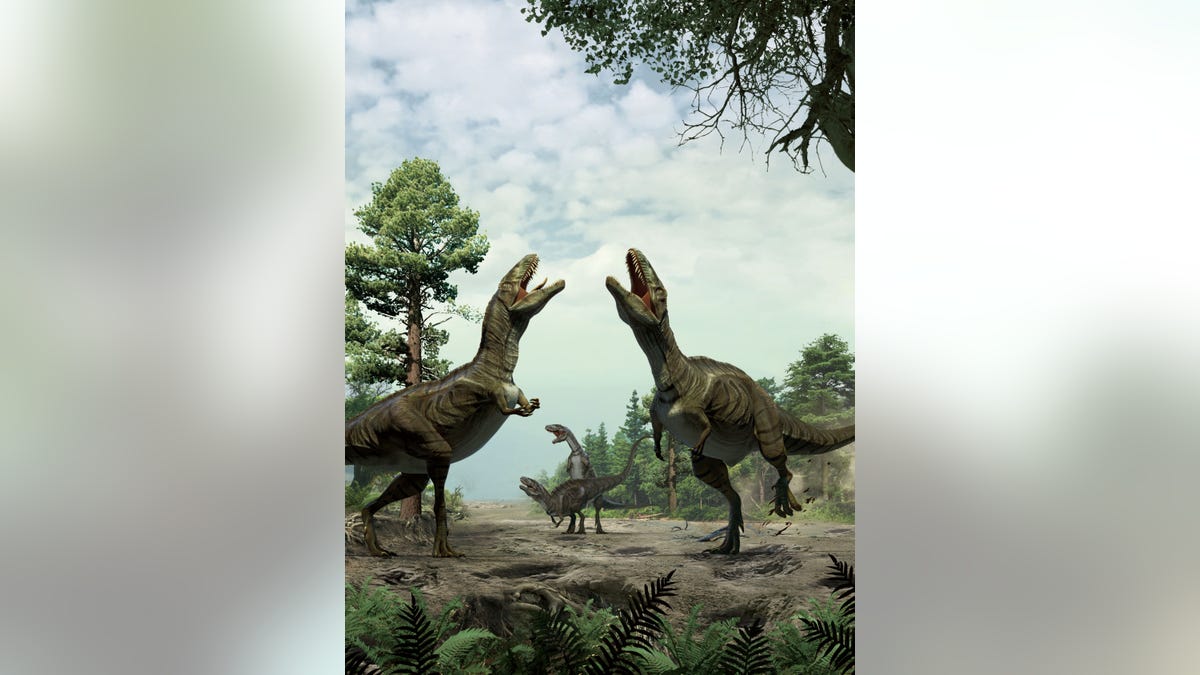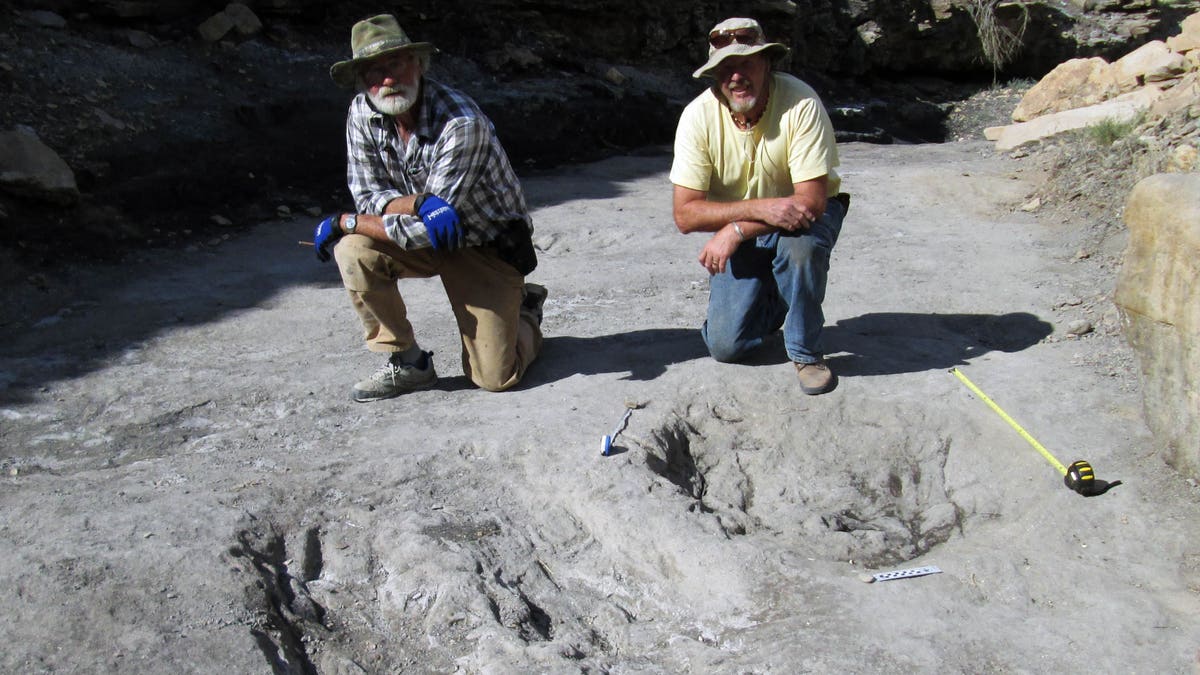
Reconstruction of theropods engaged in scrape ceremony display activity, based on trace fossil evidence from Colorado. (Xing Lida and Yujiang Han)
Some dinosaurs may have engaged in courtship rituals similar to ostriches and other birds, a finding that could shed light on the poorly understood mating behavior of these giants.
The evidence comes from a series of scrapes that were uncovered in 100 million year old Dakota sandstone at four sites in western Colorado. These ancient scrapes from Cretaceous therapods are similar to a behavior known as ‘nest scrape display’ or ‘scrape ceremonies’ among modern birds, where males show off their ability to be good mates by digging up pseudo nests for their prospective partners.
Related: Ancient marine reptiles flew through the water
“These are the first sites with evidence of dinosaur mating display rituals ever discovered, and the first physical evidence of courtship behavior,” Lockley, a University of Colorado Denver geology professor and a co-author on a study of the findings in Scientific Reports Thursday, said in a statement. “These huge scrape displays fill in a missing gap in our understanding of dinosaur behavior.”

Team leader Martin Lockley (right) and co-author (Ken Cart) kneel beside two large Cretaceous-age scrapes from western Colorado that are the first physical-reported evidence that large theropod dinosaurs engaged in courtship behavior. (M. Lockley)
Lockley, who also is a world-renowned expert on dinosaur footprints, found evidence of more than 50 dinosaur scrapes, some as large as bathtubs, in an area where tracks of carnivorous and herbivorous dinosaurs have also been confirmed. The display arenas, also called ‘leks’ were found in two National Conservation Areas (Dominguez-Escalante and Gunnison Gorge) on property permitted by the Bureau of Land Management near
Evidence of mating areas were also discovered by Lockley at Dinosaur Ridge, a National Natural Landmark, just west of Denver.
Related: These dinosaurs liked to get their feet wet
Since it was logistically difficult to remove the scrapes, the researchers turned to technology for help. They created 3-D images of the scrapes using a technique of layering photographs called photogrammetry. They also made rubber molds and fiberglass copies of the scrapes – which are being stored at the Denver Museum.
Until now, theories abounded about dinosaur sex including that it was driven by sexual selection and the idea that male dinosaurs in prehistoric times looked for mates and drove off weaker rivals. Females, meanwhile, would have selected the biggest and strongest mates – much as we see in the animal kingdom today.
The problem was there was no physical evidence – until now.
The scrapes, which the researchers believe were most likely associated with territorial activity during the breeding season, demonstrate that the mating behavior is similar to birds - which makes sense since they are descended from dinosaurs.
“The scrape evidence has significant implications,” Lockley said. “This is physical evidence of pre-historic foreplay that is very similar to birds today. Modern birds using scrape ceremony courtship usually do so near their final nesting sites. So the fossil scrape evidence offers a tantalizing clue that dinosaurs in ‘heat’ may have gathered here millions of years ago to breed and then nest nearby.”
Related: 'The Good Dinosaur': Could humans and dinos coexist?
Initially, the authors considered several possible reasons for the scrapes – including a nesting site, territorial markings or evidence that the dinosaurs were digging for food.
They ruled out the nesting site because they found no eggs while the food theory suffers from the fact that such behavior probably would have resulted in deeper digging and “pooling that would wash out scrape marks in sandy sediments.”
As for the scrapes done to mark territory, the researchers said it was unlikely since this behavior is found in mammals but not “known in water-conserving uricothelic reptiles and birds.”
That leaves the mating behavior, which the authors said was consistently supported by the evidence and is similar to the rituals of several modern bird species including ostriches, puffins and shorebirds like Wilson’s plover.
Thomas E. Williamson, curator of paleontology at the New Mexico Museum of Natural History & Science who did not take part in the study, told FoxNews.com that the findings were “interesting” especially because so little is known about the mating rituals of dinosaurs.
Related: Study sheds fresh light on early relatives of dinosaurs
Williamson said that it is suspected that dinosaurs must have had “a rich repertoire of behaviors related to mating and/or territoriality” based on the “elaborate skull ornamentation, colored plumage, and other structures that many dinosaurs have.” Some were using these structures to visually recognize and communicate with others of their own species, he said, while others dinosaurs such as lambeosaurine hadrosaurs (crested duck-billed dinosaurs), probably communicated through acoustic displays using resonating tubes on their heads.”
Williamson agreed that dinosaur behavior must have been similar to birds and their other closest living relatives, crocodilians. Both groups “use complex behaviors for territorial and courtship displays and based on this, it is likely that dinosaurs did too.”
“However, this new evidence is really something special. Tracks, such as the unusual ones described in this paper, provide actual physical evidence of dinosaur activity – and similar activity appears to be present in some modern birds,” he said in an email interview. “This suggests that some of these behaviors can be traced far back into the dinosaurian heritage of birds. This really brings some of these animals to life!”
